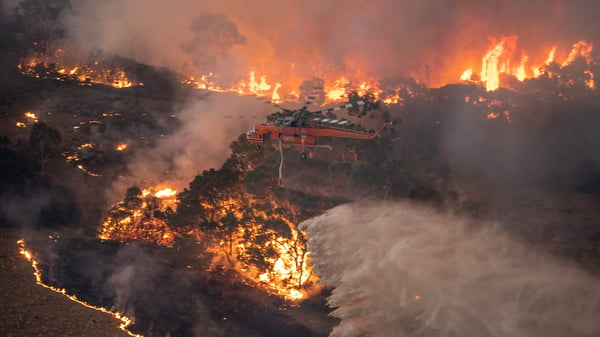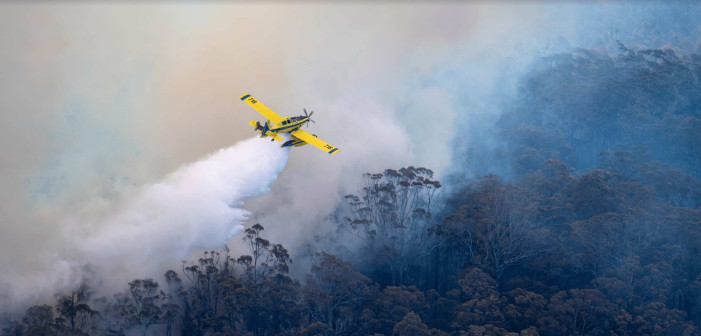This blog is a summary of a section within our ebook we recently published, which details our discussion with Richard 'Mac' McNamara, the National Manager of Operations and Aviation Lead for Fire and Emergency NZ (FENZ).
You can get your own free copy here today.
- Data Trends
- Logistical Considerations When Deploying Large Assets and Cost Benefit

Data Trends: Collecting and Reporting Context, not just Location
When aerial firefighting, we know that the real-time reporting of your assets location is essential. But recently we are seeing an increase in the collection and reporting of context, not just location, around the world. This reporting of contextual information means that we're actually able to track the effectiveness of firefighting assets on a mass scale for the first time.
If you look at the US alone, where we operate quite heavily, there's nearly US$1.8 billion spent on wildfire suppression alone, not actually including the cost of the fallout of wildfires each year. So because there's so much at stake, even a fraction of a percentage of improvement on the effectiveness of firefighting has a really dramatic impact.
Collecting context in this sense includes: type of retardant dropped, amounts dropped, start and stop positions on a fire front, seeing where the water is picked up from, and seeing how much retardant was dropped in each particular location and by what type of asset. This then leads us to be able to tell how much it costs per litre to drop the retardent, depending on different asset types, and track the effectiveness of those different response assets.
There will be an inevitable trend towards collecting this data in New Zealand. And the challenge will be how providers can supplement and enhance what's already on board the aircraft as opposed to simply replacing it. For example, one of the additional telemetry units that we're seeing great success with in Australia is the AFDAU-T1, which is a device that is compatible with a number of tracking units already. So it's plug and play for most devices that will be on aircraft already. This specific device enables operators to automate data collection and reporting - allowing them to focus on their actual task at hand while gaining valuable data for effective decision-making.
Logistical Considerations when Deploying Large Assets and cost Benefit
Another trend that we’re seeing take shape is a trend away from putting very large air tankers like a 737 or DC10 over the top of a fire, and we're seeing more of a focus towards the smaller single engine air tankers and the type one or two helicopters. Due to the shorter circuit times required for those aircraft, and the ability to fight in a pack, instead of dropping a lot of water on a single line, we can see a smaller amount of water dropped on different responsive areas. So instead of the fire being able to adapt to one single drop, we can see a real compounding ability to fight the fire.
We’ve also come to realise that deploying larger assets to respond to wildfires is simply not cost effective and it’s logistically flawed. Most larger aircraft can only run out of certain airfields with the necessary runway length, and they have longer circuit times to get to and from the fires. Some of the big 130s that are used can cost up to US$30,000 per hour to fly. Not only this, but it’s got to the point where a fire has to reach a certain size before large assets can be requested for use - which is a self-defeating argument because by the time a fire is big enough, it would have already impacted communities and caused damage.
In NZ we don't really have large aircraft, but we have a hugely varied fleet with over 260 off-contracted aircraft, ranging from 400-litre to 2000-litre buckets. If we put three average helicopters and a fixed wing aircraft in a circuit, with a 5 minute turnaround for the helicopters and 15 minute turnaround for the fixed-wing water bomber, we can lay down 40,000 litres an hour with that circuit. So if you have 3 circuits running, that's a lot of hitting power.
The trend we are going to see in the future is to hit the fires hard and keep them small, with rapid initial attack using smaller aircraft that can get on the scene more quickly and lay down retardant and suppressant in a timely manner.
Looking to improve your wildfire response?
We enhance operations by providing a globally trusted tracking and communications platform.
Talk to us today at sales@tracplus.com to learn more.
